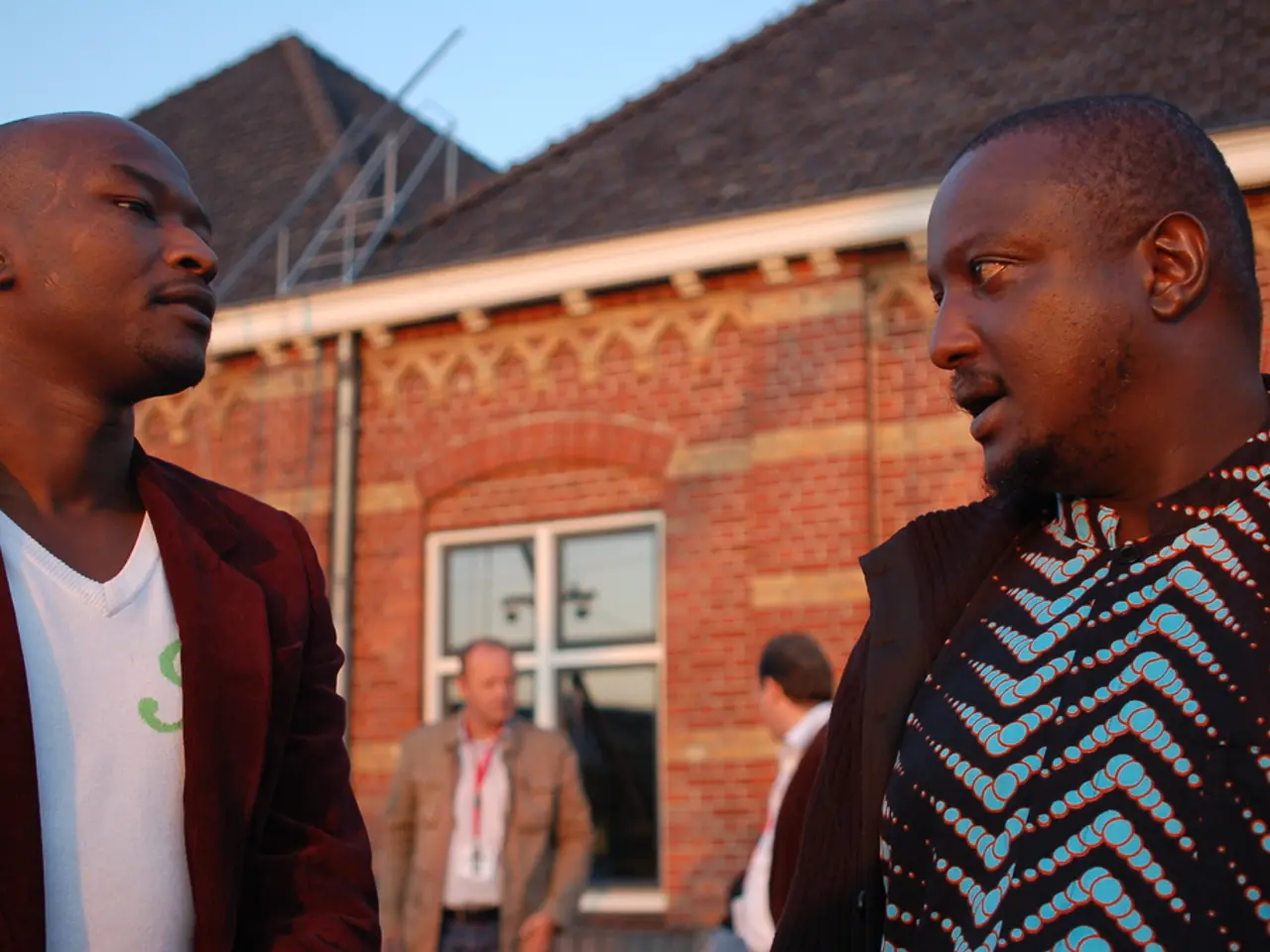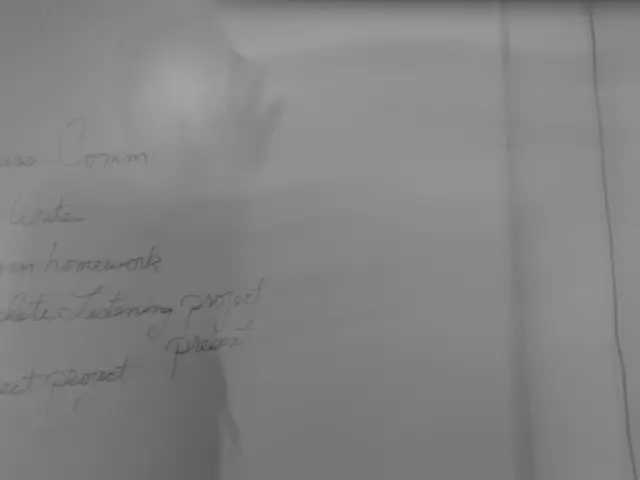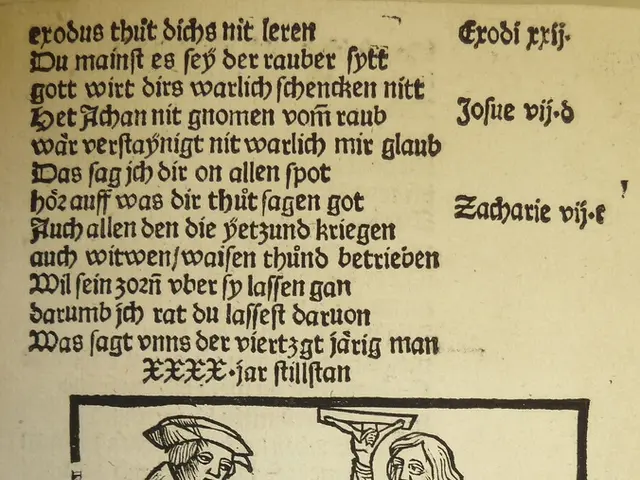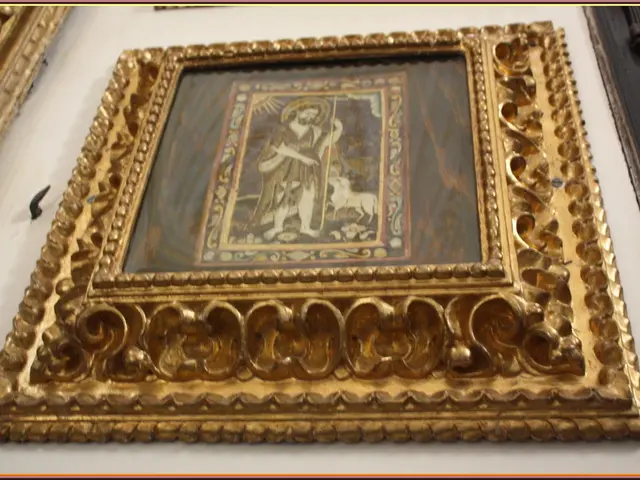The Influencing Factors in Language Acquisition: Genetics, Society, or Location?
Unveiling the Link Between Culture and Genetics: A New Perspective on Human History
A groundbreaking study has shed light on an unexpected connection between culture and genetics, offering a fresh perspective on human history. The research, which examines 130 populations worldwide, reveals that the transmission of language follows patterns that were previously unforeseen.
The sounds we make when we speak carry the fingerprints of ancient movement patterns, a fact that becomes more evident when we consider the integration of multiple types of evidence - genetic, linguistic, archaeological, and ethnographic. This holistic approach provides a more complete picture of human history than any single approach can achieve.
Men and women don't always follow identical movement patterns within migrations, which influence how languages evolve over centuries. This is particularly true in matrilineal societies, where cultural practices fundamentally alter how languages and genes spread together across generations and continents.
In certain African matrilineal communities, children's language development tracks remarkably closely with their mother's genetic lineage, particularly through mitochondrial DNA inheritance patterns. This correlation is much stronger than statistical models would predict, suggesting that cultural practices enhance the natural tendency for maternal genetic and linguistic inheritance to align.
On the other hand, European populations generally show weaker correlations between maternal genetics and language features. Asian populations present mixed patterns, with some showing evidence of sex-biased language transmission and others showing no clear bias.
Cultural practices significantly influence the transmission of both language and genes across generations and continents by shaping how communities maintain their identity, social networks, and migration patterns. For instance, the use of a heritage language fosters strong social bonds within immigrant families and ethnic communities, ensuring the preservation and transmission of language across generations.
Distinct cultural folkways transmitted by migrating groups can shape social and cultural landscapes long after genetic dilution, as in early American British-derived cultures. The interplay between genetics and linguistics further illustrates this connection: recent studies in Finno-Ugric peoples reveal how genetic ancestry often aligns closely with linguistic heritage, indicating that migration routes, interactions, and language evolution are deeply intertwined with genetic flow.
Oral traditions amplify this effect by preserving collective memory, values, and knowledge independent of written records, allowing language and culture to adapt dynamically over time while continuing the transmission of a group’s identity and history.
In summary, heritage language use strengthens ethnic identity and community ties, preserving language and thus cultural continuity despite geographical dispersal. Distinct cultural folkways transmitted by migrating groups can shape social and cultural landscapes long after genetic dilution. Genetics and linguistics align, evidencing how cultural groups migrate together, passing down genes alongside language and customs. Oral traditions serve as flexible, dynamic vehicles for transmitting language and culture across generations without reliance on writing.
These cultural practices create a complex mechanism through which both language and genes are transmitted, preserving and reshaping human diversity across time and space. The revelation that our "mother tongue" may not always come from our mother opens new questions about the most fundamental aspects of human experience.
[1] DeVries, A., & Vanderbilt, K. (2014). Language maintenance and shift in immigrant families: A review of the literature. International Journal of Bilingual Education and Bilingualism, 17(3), 289-306.
[2] Kivisild, T., Allard, R., Lipson, M., et al. (2016). The Finno-Ugric expansion: A genetic perspective. Nature, 533(7602), 453-459.
[3] Fernández, G., & Fought, B. (2013). Language maintenance and shift among immigrant families: A review of the literature. International Journal of Bilingual Education and Bilingualism, 16(6), 599-613.
[4] Fischer, D. H. (2003). Albion's seed: Four British folklores and the birth of American democracy. Oxford University Press.
[5] Mufwene, S. (2001). The African origin of language: The cognitive basis for linguistic diversity. Cambridge University Press.
- The integration of various types of evidence, such as genetic, linguistic, archaeological, and ethnographic, illuminates the integration of language and movement patterns, offering insights into science and health-and-wellness aspects of human history.
- Personal-growth and education-and-self-development opportunities arise from understanding how cultural practices can impact language acquisition and transmission, as demonstrated in certain African matrilineal communities.
- Fitness-and-exercise practices can benefit from exploring the physical evidence of ancient movement patterns found in sounds made when speaking, aligning with the broader study of human history and health-and-wellness.
- Career-development in fields like anthropology, linguistics, and genetics may be bolstered by research into the inner workings of cultural groups, language evolution, and genetic alignment, shedding light on mental-health aspects of human diversity. Nutrition can also gain perspective from studying the links between cultural practices, migration, and gene transmission, contributing to our understanding of human history.




